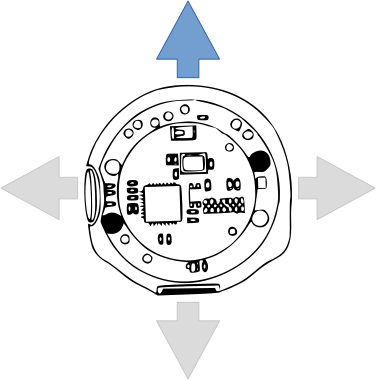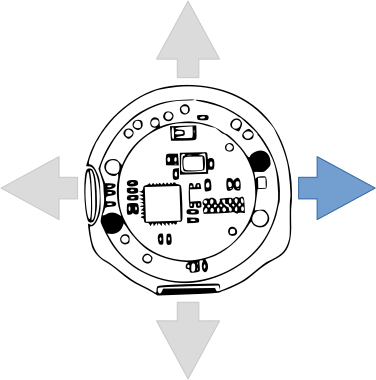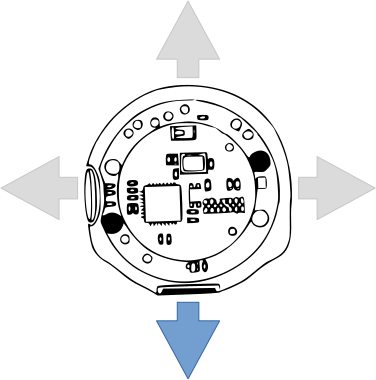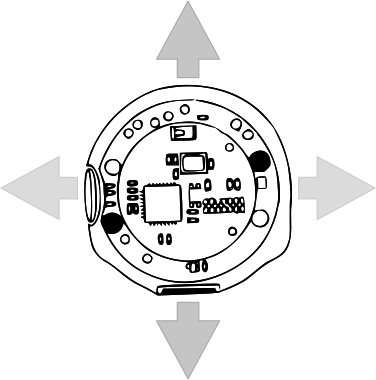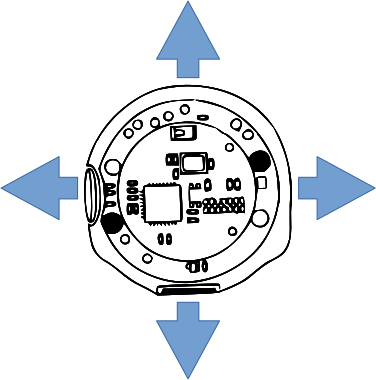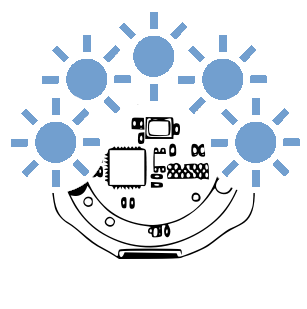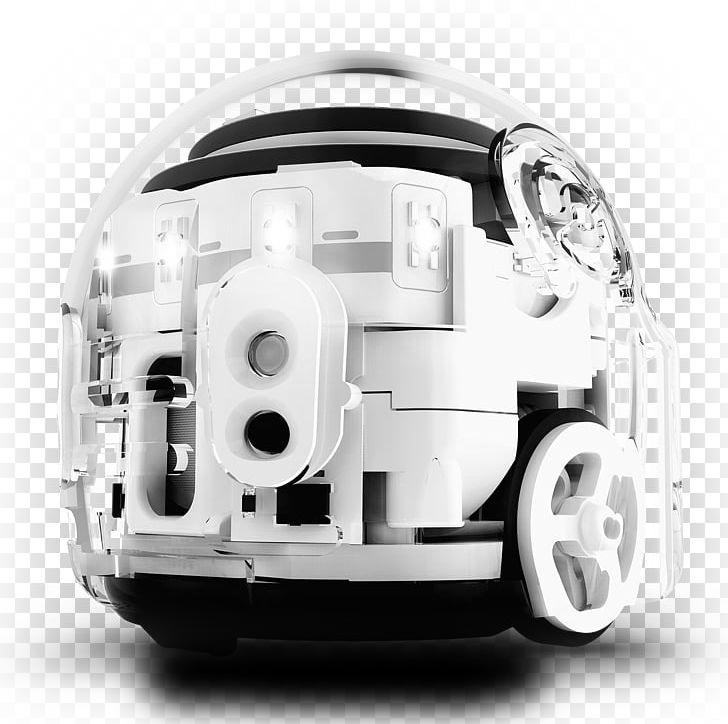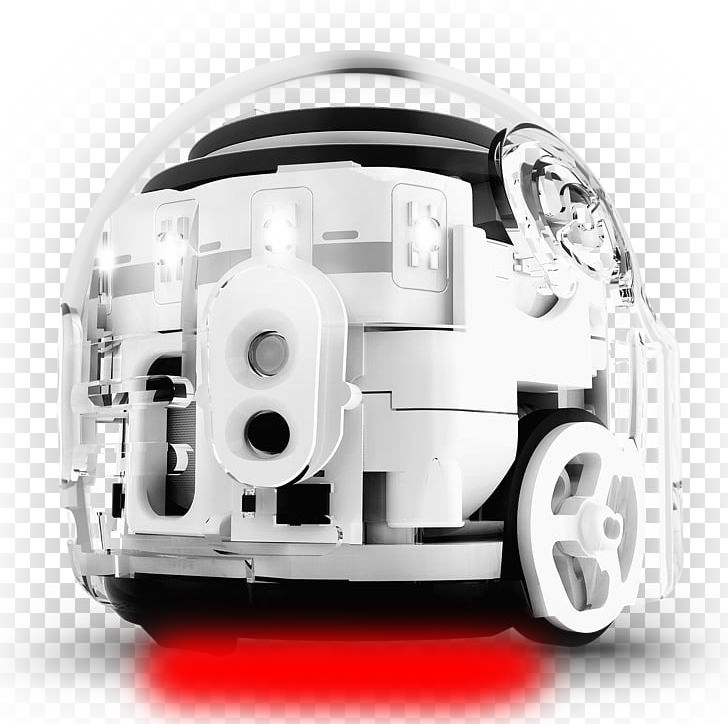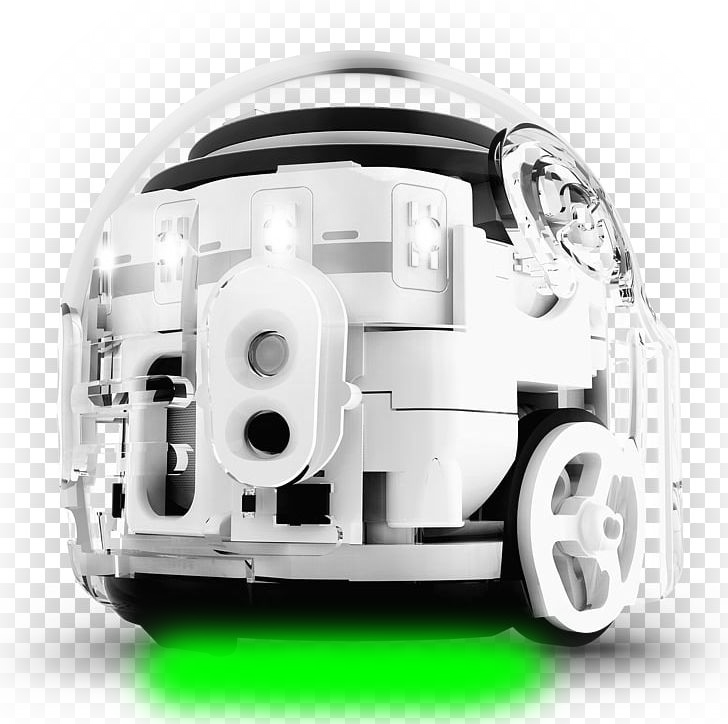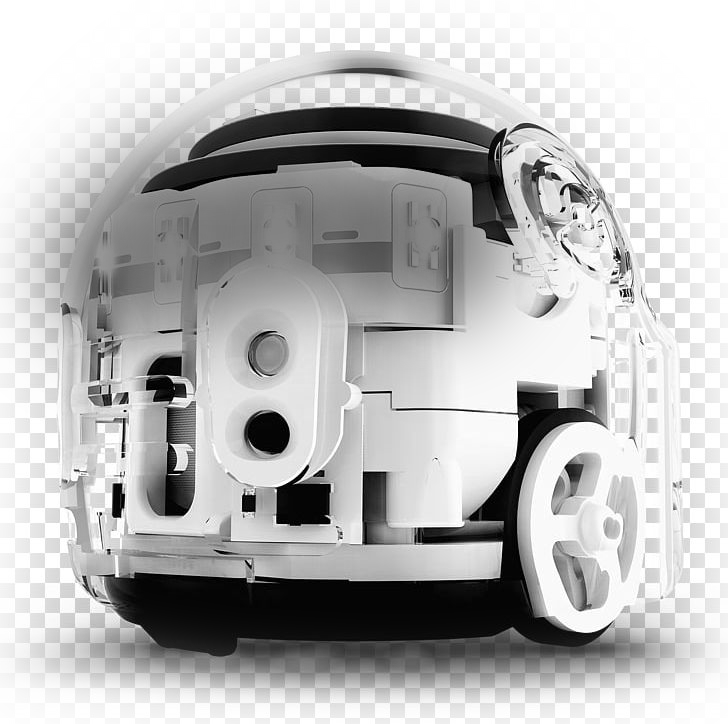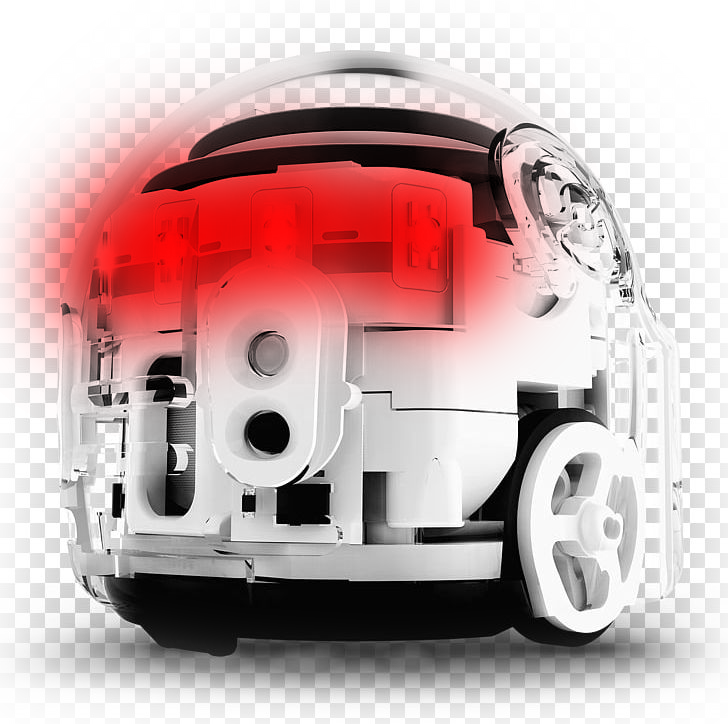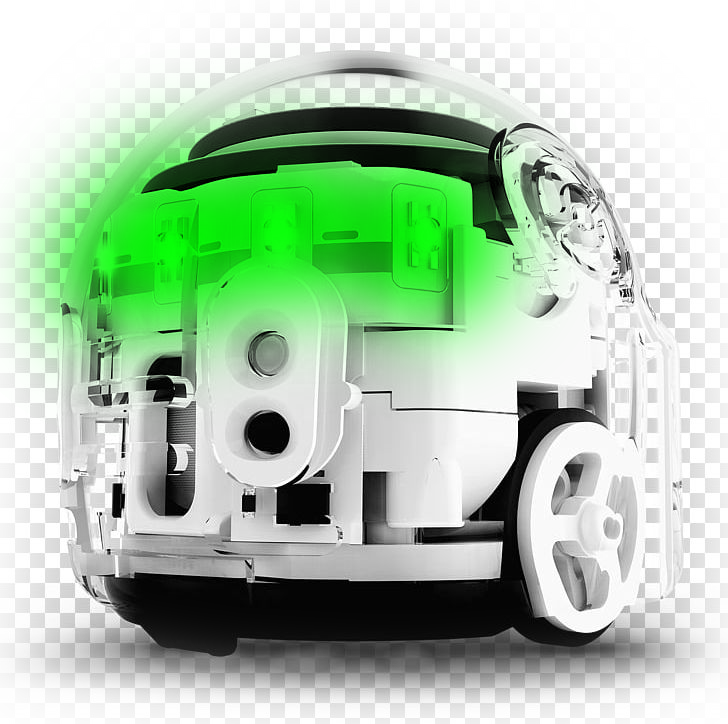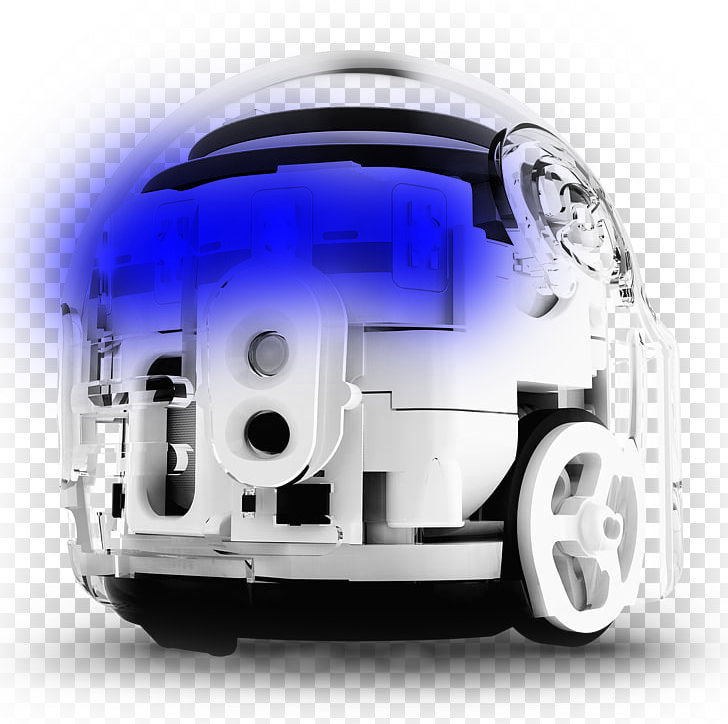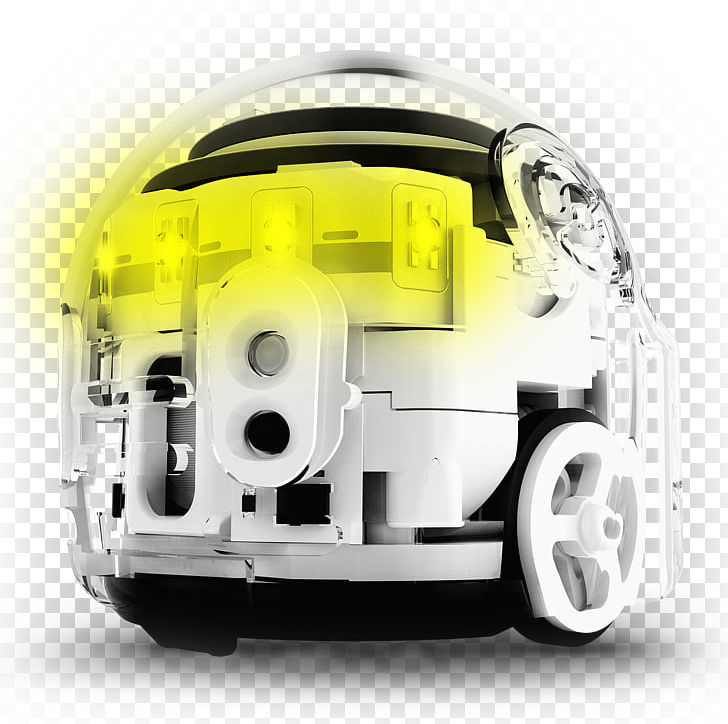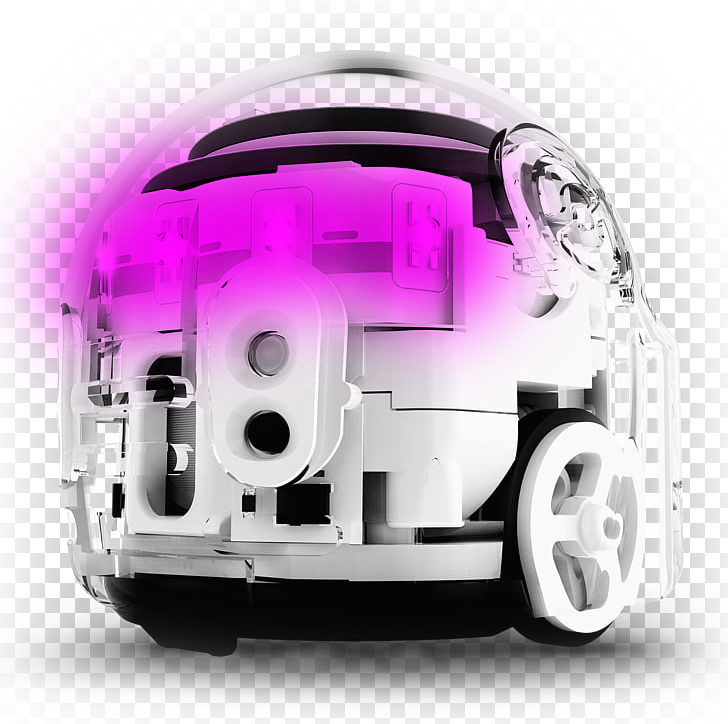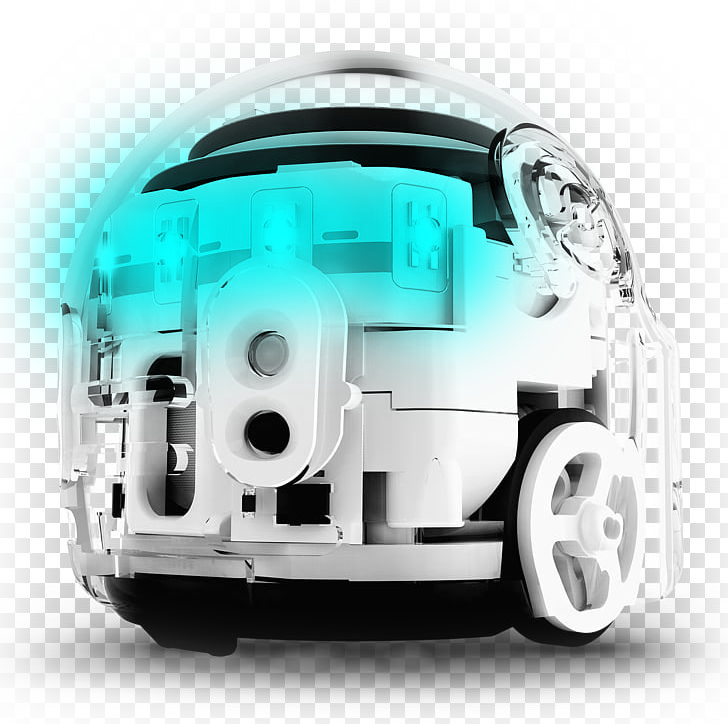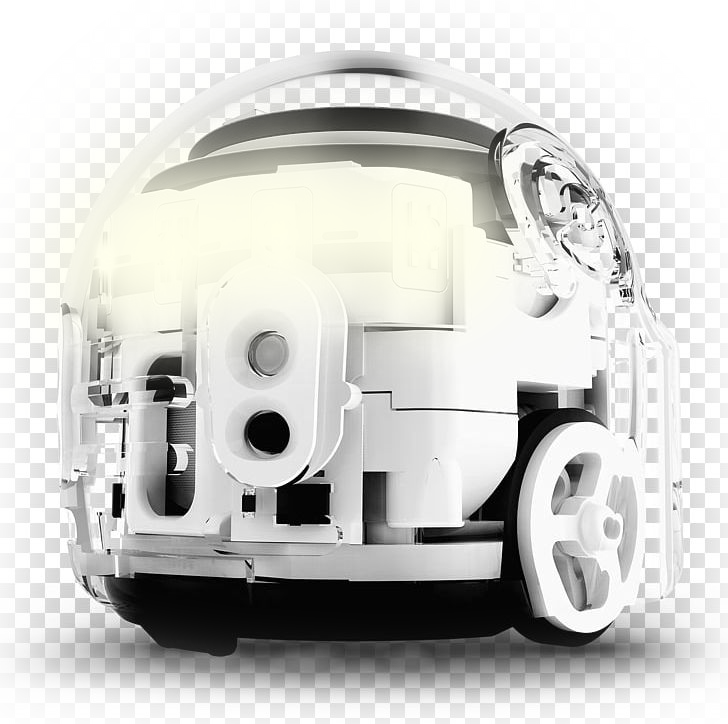Basic interface
To interact with the robot there is a dedicated Python module ozobot. This is the one module that
shall be imported by the user in any program. Module consists of two major parts:
ozobotmodule itself contains all related enumerators which may be used by user when communicating with a robot.ozobot.get_robot()getter which returns an object representing one robot. The robot object (Botfor synchronous orBotAsyncfor asynchronous access) is all you need to tell the robot to “do something”. Simply said, robot object represents your physical robot.
Module ozobot
This module is the main procedural interface for communication with the Ozobot. Module allows the control of movement or LED colors, read various sensors and many other functionalities. Script accessing the robot may look like in the following example:
# First of all we have to import this module
import ozobot
# Sometimes we need also some additional modules such as asyncio
# or time. To be sure that these modules will be running on any type
# of robot, we shall use one of ozobot submodules.
#
# As we want to do some waiting for a certain time (sleep_ms),
# we will import module time here
from ozobot import time
# Second step is to get the robot which we want to use
# If we have just one robot, we can simply ask for the default robot
bot = ozobot.get_robot()
# Cool, now we have a robot, so lets start to play with it.
# We can e.g. control LED diodes on the robot or even play some sounds
lights = bot.light_effects
sounds = bot.sounds
# Just set some LED color and play note ...
lights.set_light_color(ozobot.SurfaceColor.RED, ozobot.Lights.FRONT_1)
sounds.play_note(6, ozobot.Note.C, 0.5)
lights.set_light_color(ozobot.SurfaceColor.RED, ozobot.Lights.FRONT_2)
sounds.play_note(6, ozobot.Note.E, 0.5)
lights.set_light_color(ozobot.SurfaceColor.RED, ozobot.Lights.FRONT_3)
sounds.play_note(6, ozobot.Note.G, 0.5)
lights.set_light_color(ozobot.SurfaceColor.RED, ozobot.Lights.FRONT_4)
sounds.play_note(7, ozobot.Note.C, 0.5)
lights.set_light_color(ozobot.SurfaceColor.RED, ozobot.Lights.FRONT_5)
time.sleep(0.5)
# Note that here we are using time.sleep_ms as mentioned above
lights.set_light_color(ozobot.SurfaceColor.BLACK, ozobot.Lights.FRONT_1)
time.sleep(0.5)
lights.set_light_color(ozobot.SurfaceColor.BLACK, ozobot.Lights.FRONT_2)
time.sleep(0.5)
lights.set_light_color(ozobot.SurfaceColor.BLACK, ozobot.Lights.FRONT_3)
time.sleep(0.5)
lights.set_light_color(ozobot.SurfaceColor.BLACK, ozobot.Lights.FRONT_4)
time.sleep(0.5)
lights.set_light_color(ozobot.SurfaceColor.BLACK, ozobot.Lights.FRONT_5)
time.sleep(0.5)
# .
# .
# .
# ... and so on
In some cases, especially in the future when this interface may be extended, it is beneficial to know the current OzoPy API version. For this purpose the version of the ozobot module is defined here.
- class ozobot.Version(ver=None)
Helper class allows to get, stringify or compare between various versions of OzoPy API.
- Example
- Parameters
ver (tuple) –
# Checks if the requirement for minimal ozobot module version is met from ozobot import Version version = Version() # This gives current API version at_least = Version((1, 2, 1)) # This gives minimal required API version as 1.2.1 if version.integer < at_least.integer: raise RuntimeError('This script requires at least OzoPy version {},' ' but current version is {}!'.format(at_least, version))
- version
OzoPy API version tuple containing major, minor and patch version.
- test(min, max=None)
Test if API version is in desired range and raise an exception when API version is incompatible.
- Parameters
min (
tuple) – Minimum required API versionmax (
tuple- optional) – Maximum required API version
- Example
# Checks if the requirement for minimal ozobot module version is met from ozobot import Version Version().test((1, 2, 1))
- property integer: int
Return comparable integer representation of version
- Return type
int
Access the robot
As mentioned above, a robot shall be exclusively accessed using ozobot.get_robot(). This getter returns a
Python object Bot (or eventually BotAsync).
Every robot object can control exactly one robot.
- ozobot.get_robot(uuid=None, *, coro=False)
Get ozobot instance

The first call after the user hits “run” gets the first robot among the connected robots sorted primarily by name, secondarily by UUID. All following calls return the same robot (the robot is remembered until the user hits “run” again).
When python runs in ozobot directly, then only an instance of this robot is returned.
- Parameters
uuid (
str- optional) –When present, says which robot shall be chosen based on UUID. Otherwise nearest robot is chosen.
When there is no robot with such UUID (when selected) the
OzobotErrorwith IDNO_SUCH_ROBOTis raised.coro (
bool- optional) –When set to True, coroutines variant of robot is returned
Just note that only one variant of the robot is allowed to be used. E.g. once you choose coroutine based robot any other call of this function have to use coroutines based variant, otherwise
OzobotErrorwith IDMIXING_VARIANTSis raised.
- Return type
- Returns
Robot instance
- Example
# Get default robot instance import ozobot bot = ozobot.get_robot()
Environment and error handling
Similar to other Python modules, the ozobot module also uses exceptions with custom exception error type
OzobotError derived from RuntimeError.
- class ozobot.OzobotError(id, txt)
Ozobot exception class
This class is raised whenever any error inside robot logic is detected
- class ozobot.ErrorCode(value)
Represents error codes which may be raised with
OzobotError- NO_SUCH_ROBOT = 0
There is no such robot matching to choosen UUID
- MIXING_VARIANTS = 1
Detected attempt to mix coroutines and synchronous based variant of robot instance
- INVALID_ENVIRONMENT = 2
Invalid environment detected by environment checker in user code (see
EnvironmentInfo)
- class ozobot.EnvironmentInfo
Ozobot environment info
Time after time is handy to use some platform specific python modules (e.g.
numpy) which are not compatible with all supported Ozobot platforms. In this case is benefitial to know which platform of the robot we are running.This class provides information and methods allowing us to read and checks environment compatibility.
Note
See
environmentto get list of currently supported environments- Example
# Checks if we are running in web browser env = EnvironmentInfo() # This gives current environment info env.required('web') # Throws an exception if we are not in web environment
- property environment: str
Get current environment where we are running.
Currently supported environments are following:
Name
Environment
“web”
“robot”
Python running directly inside the robot
- Getter
Returns this direction’s name
- Return type
str
- required(req)
Test for exact environment
- Parameters
req (
str) – Requested environment (see table inenvironment)
Tests if we are running in selected environment and throw exception
OzobotErrorwith error codeINVALID_ENVIRONMENTwhen environment does not match.
Robot enums
In order to communicate with a robot, it is sometimes handy to have some “dictionary” of words which the robot is able
to understand. One option is to use strings ("LEFT", "RIGHT", "RED", "GREEN", …),
however strings have their own disadvantages, as parsing of them may be not that fast as their numeric (integer)
representation. It is also more easy to miss-spell a command (e.g. to use "FRONT1" instead of "FRONT 1").
In this case, intellisense is even unable to give you a good hint. Therefore, enumerators have been used
for communication with the robot. Enumerators are objects which have exactly one meaning
(e.g. FRONT_1 means first front LED light). It is also possible to combine
more enums (e.g. FRONT_1 | FRONT_2 means that the first two front LEDs are affected by the command).
Here is the list of all enumerators usable with robot:
- class ozobot.Directions(value)
Represents directions of robot.
There can be more directions detected by robot, e.g. like in following example:
import ozo bot = ozobot.get_robot() dir = ozobot.navigation.get_last_intersection_type() if ozobot.Directions.LEFT in dir or ozobot.Directions.RIGHT in dir: bot.sounds.say_direction(dir)
- FORWARD = 1
- LEFT = 2
- RIGHT = 4
- BACK = 8
- ERROR = 0
- ANY = 15
- class ozobot.Lights(value)
Represents LED lights positions. This positions can be combined by logical operation e.g. like in following example:
import ozo side_lights = ozobot.Lights.FRONT_1 | ozobot.Lights.FRONT_5
- TOP = 1
- FRONT_1 = 2
- FRONT_2 = 4
- FRONT_3 = 8
- FRONT_4 = 16
- FRONT_5 = 32
- LEFT_CYAN = 64
- BACK_RED = 128
- ALL_FRONT = 62
- ALL_ROBOT = 255
- class ozobot.Note(value)
Represents notes playable by robot.

- C = 0
Note C
- C_sharp = 1
Note C#
- D_flat = 1
Note Db
- D = 2
Note D
- D_sharp = 3
Note D#
- E_flat = 3
Note Eb
- E = 4
Note E
- F = 5
Note F
- F_sharp = 6
Note F#
- G_flat = 6
Note Gb
- G = 7
Note G
- G_sharp = 8
Note G#
- A_flat = 8
Note Ab
- A = 9
Note A
- A_sharp = 10
Note A#
- B_flat = 10
Note Bb
- B = 11
Note B
- class ozobot.LineColor
Represents lines colors sets recognized by robot.
- BLACK = 0
- RED = 1
- GREEN = 2
- BLUE = 4
- UNKNOWN = 8
No color detected
